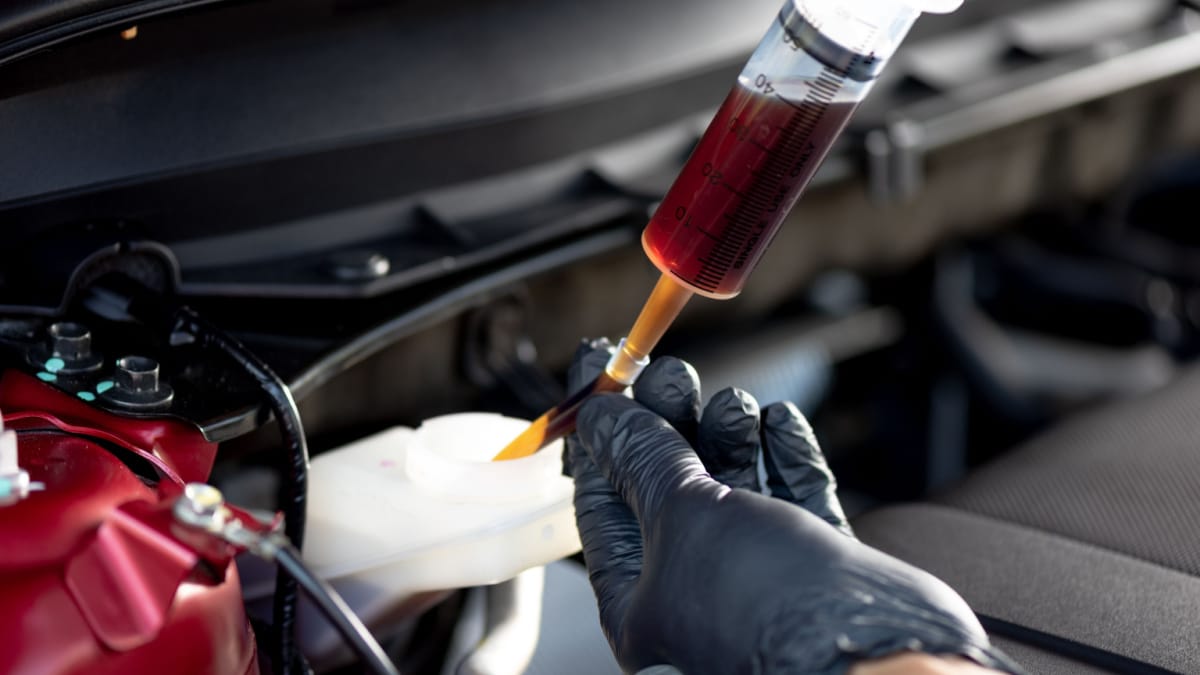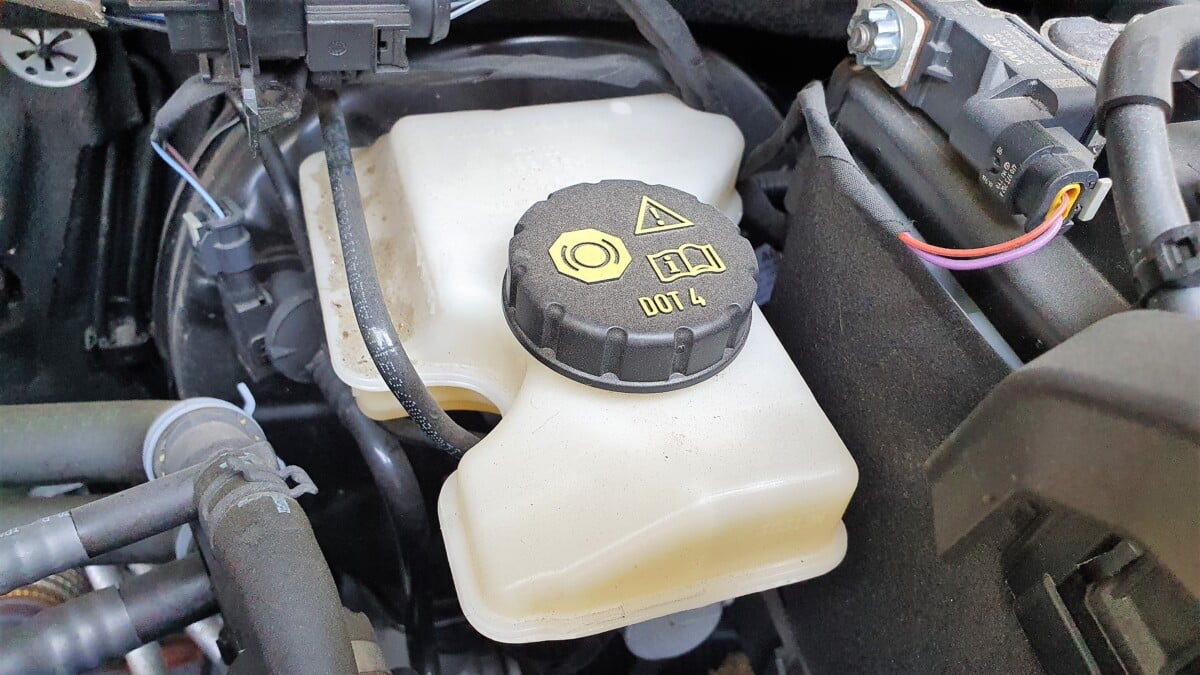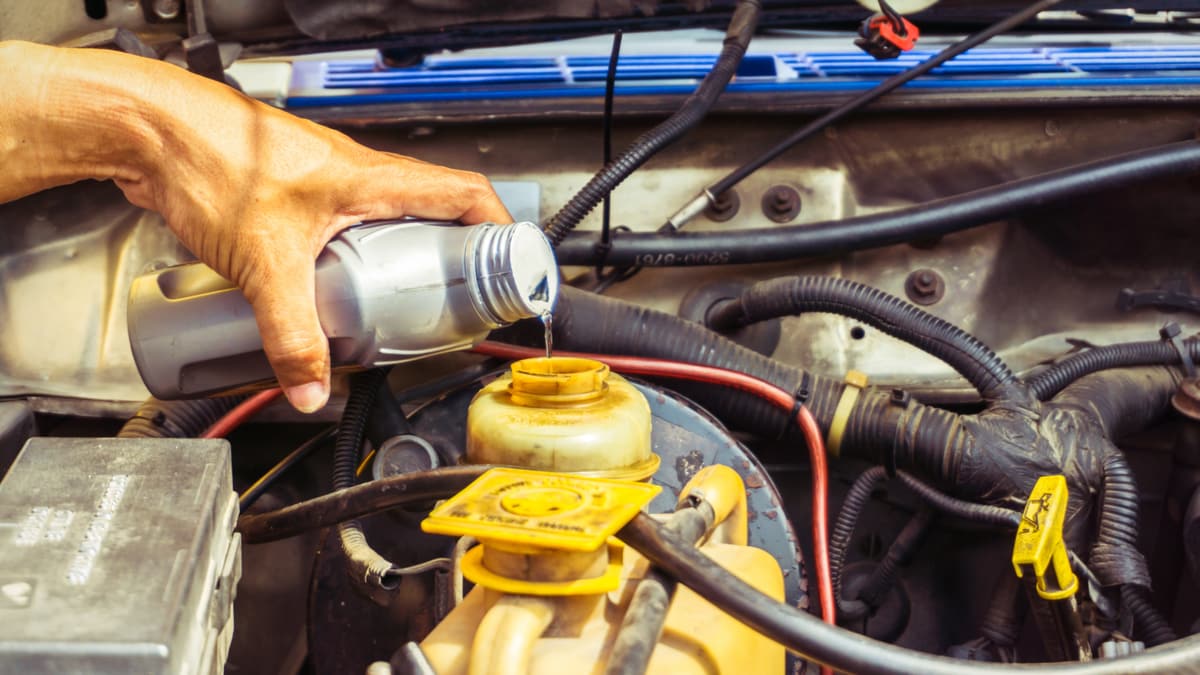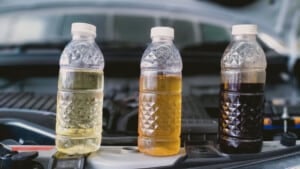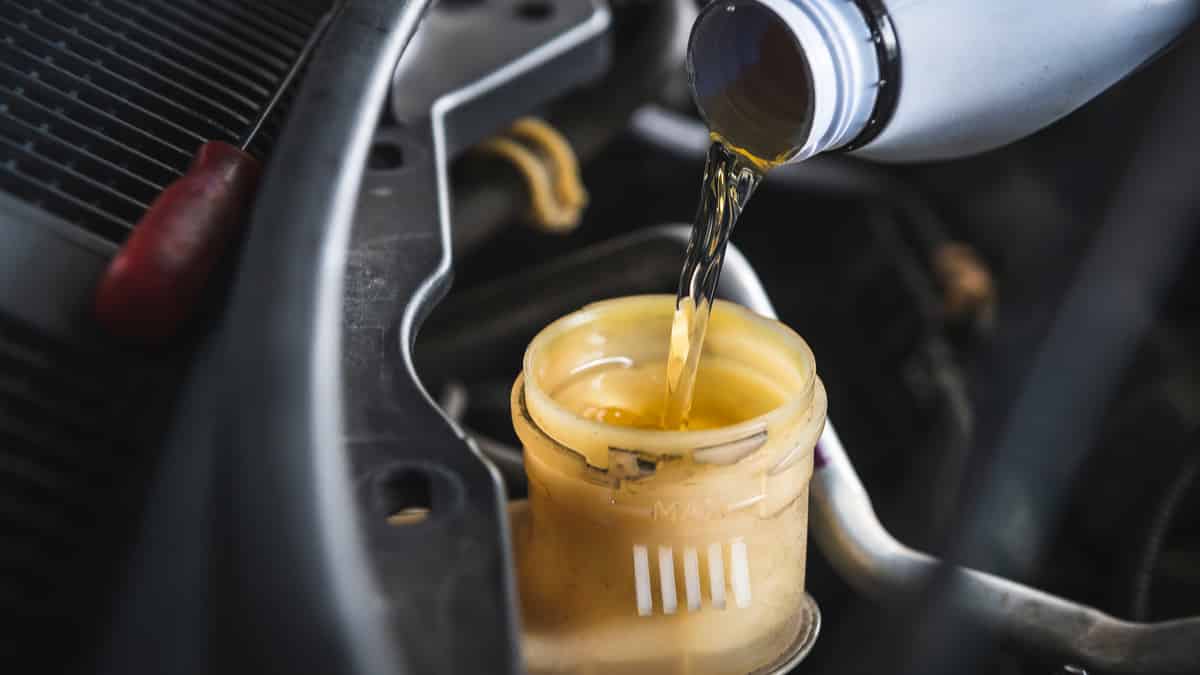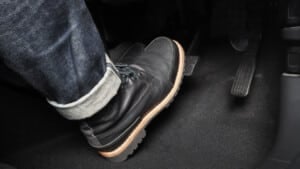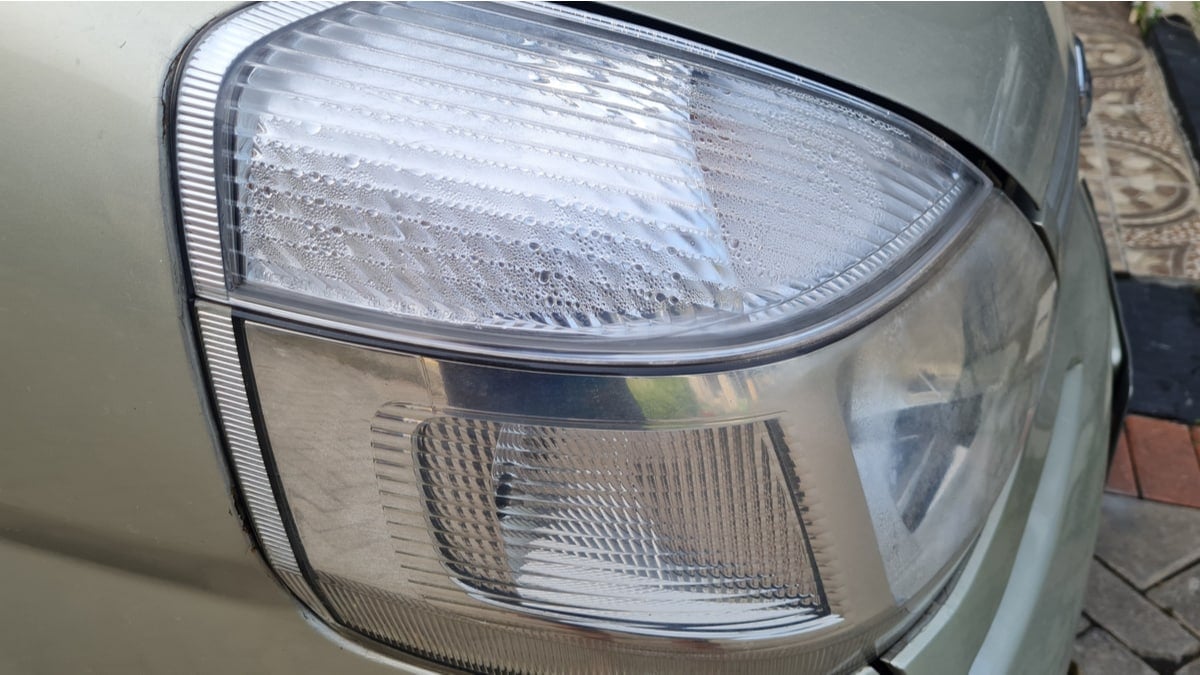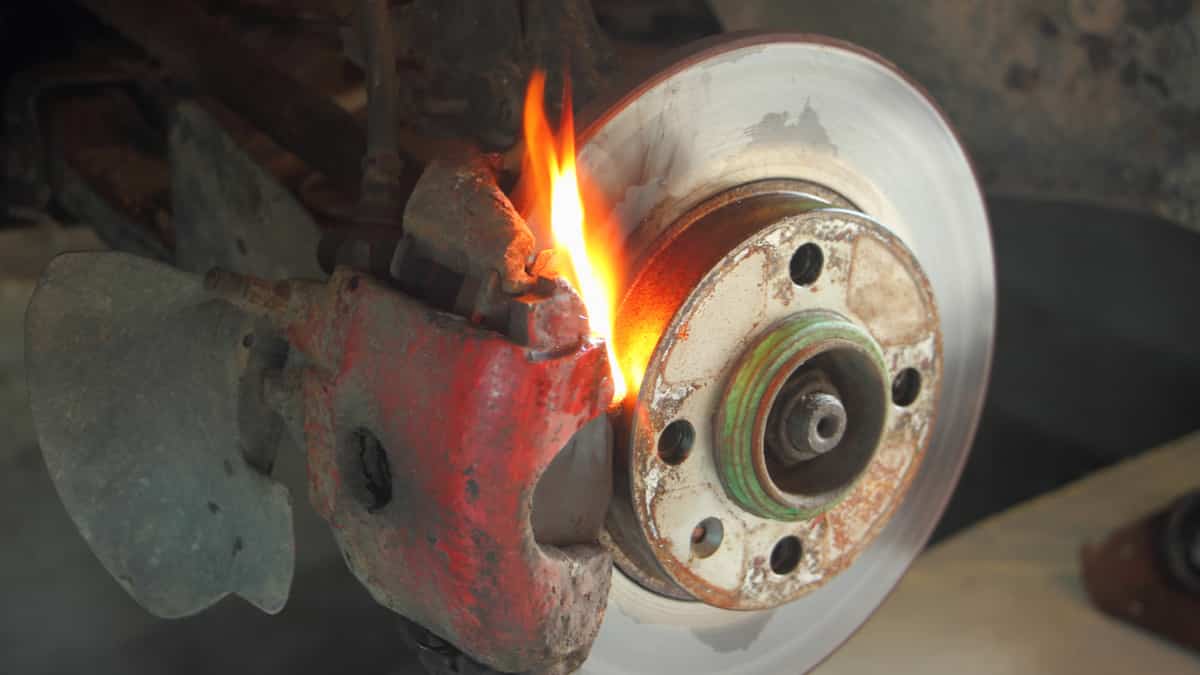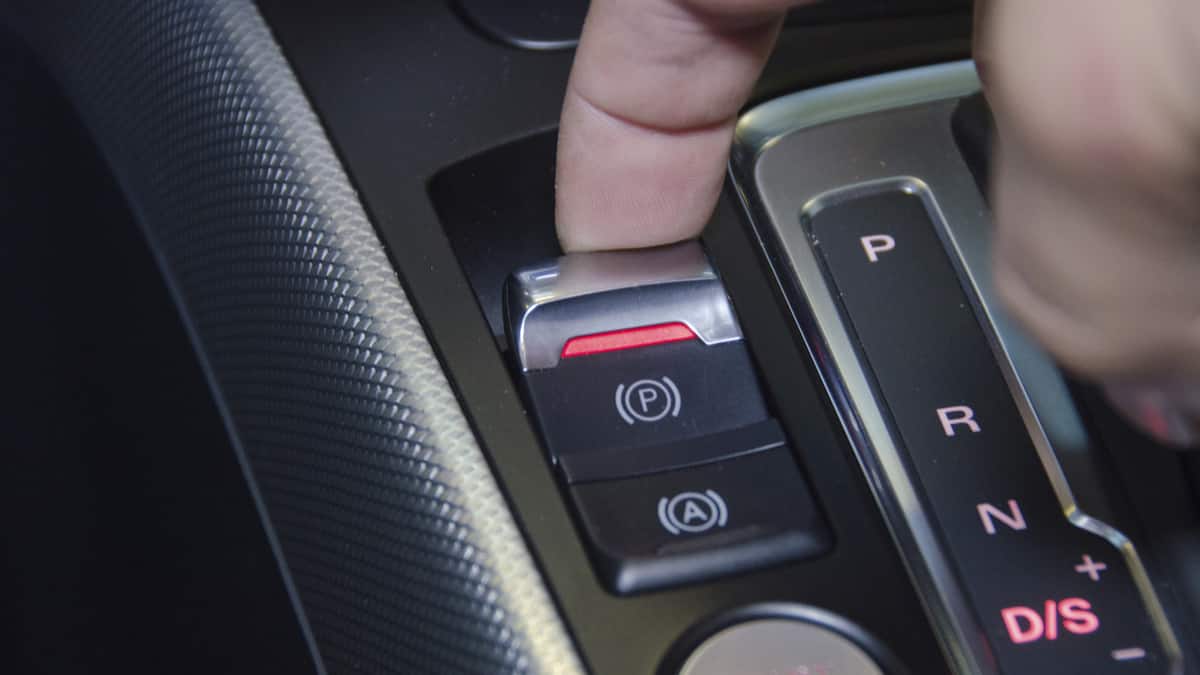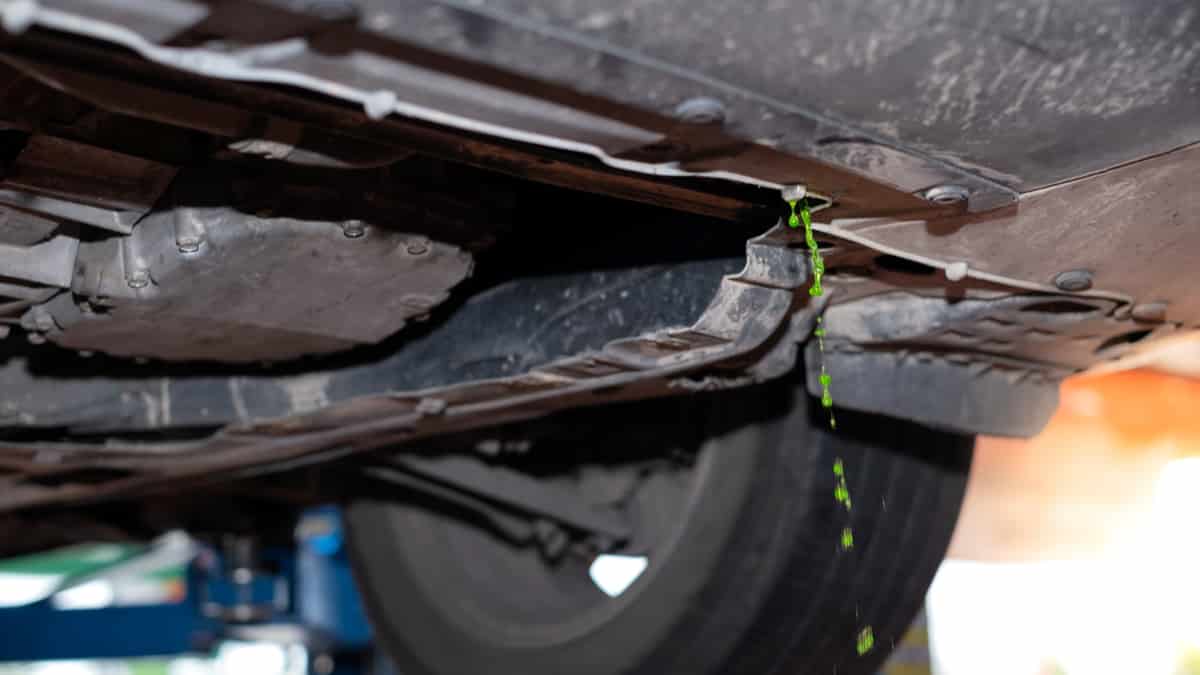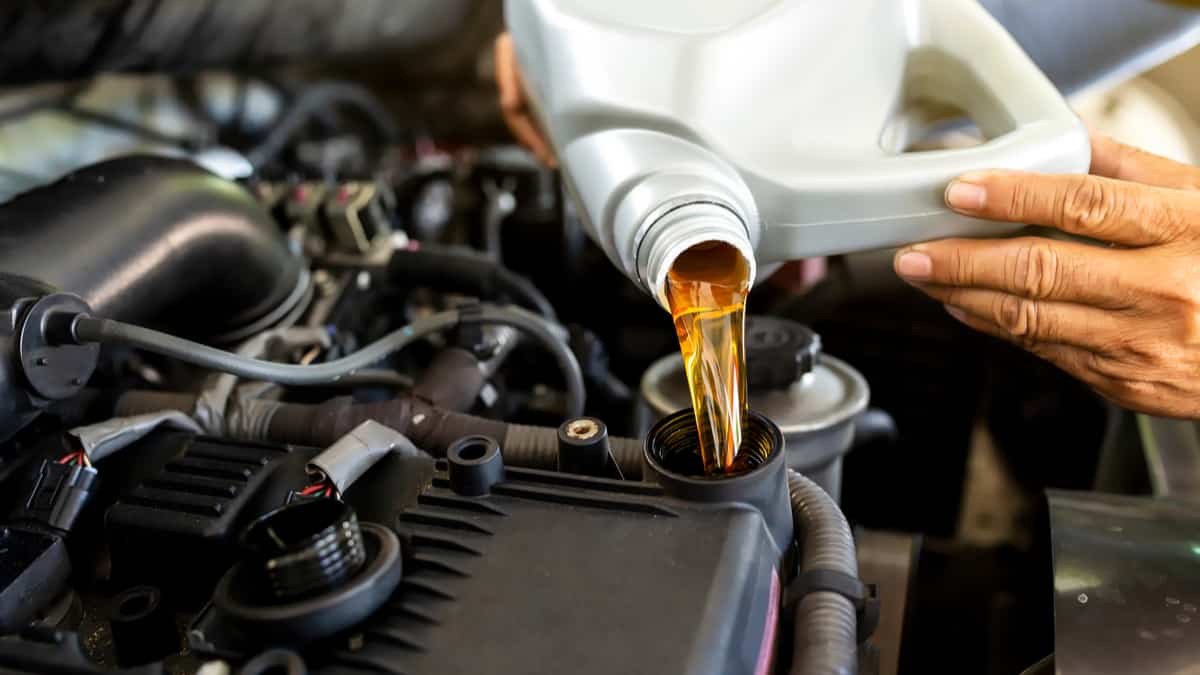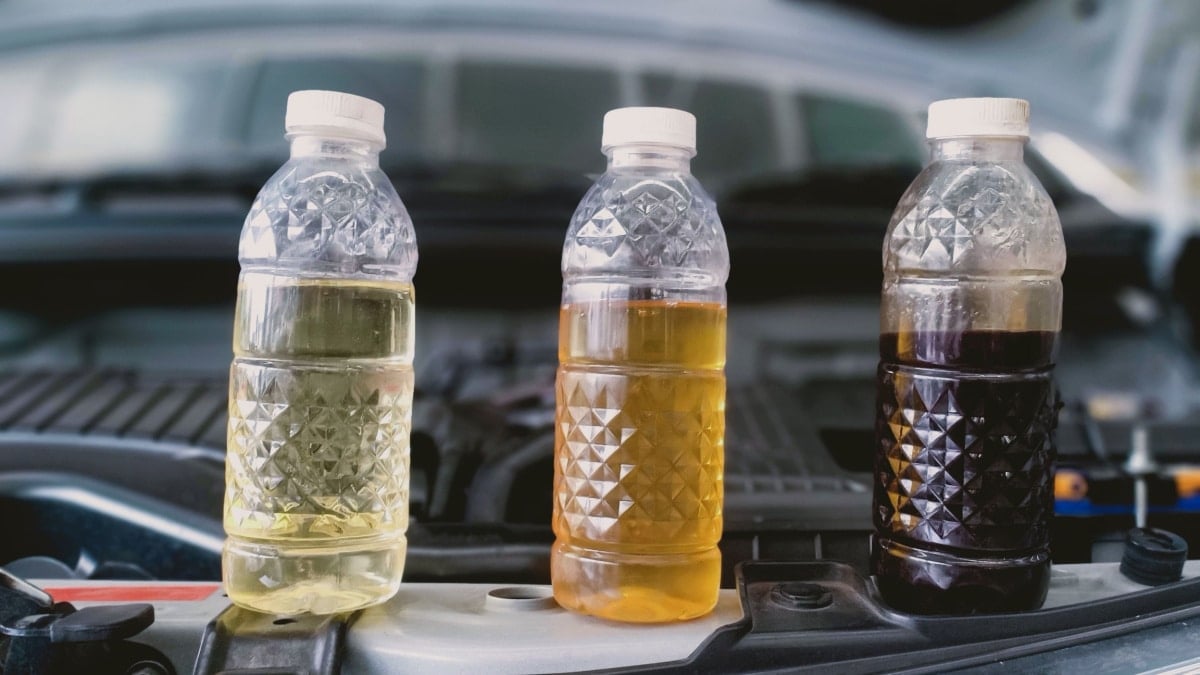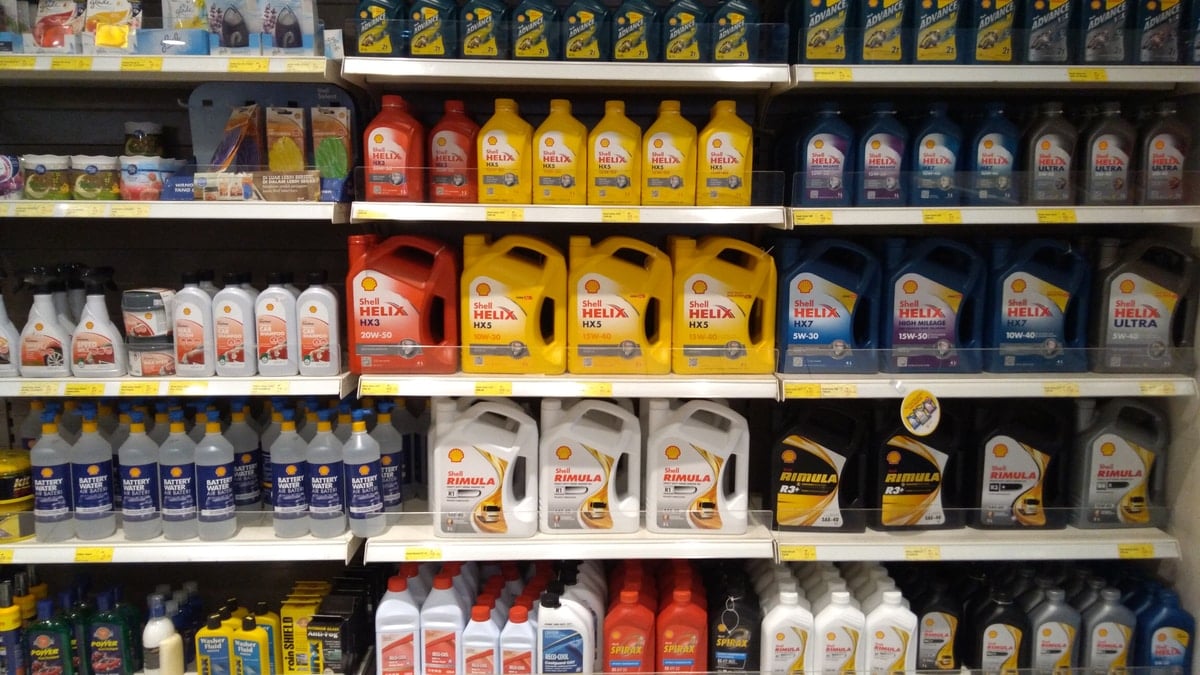Today’s cars rely on hydraulic braking, which requires brake fluid for proper operation and lubrication. Over time, this fluid needs to be flushed, so fresh fluid can be added. If you aren’t used to performing this regular maintenance, you may ask – how much brake fluid do I need for a flush?
To help you get the job done, we’ve put together a guide on the right amount of brake fluid for your vehicle. We also talk about the tools that are required and discuss why brake fluid flushes are vital. By the time you get to the end of our guide, you will have the answers to all of your brake fluid questions.
How Much Brake Fluid Do I Need For A Flush?
The majority of passenger vehicles will take 32 ounces or a quart of brake fluid for a complete flush, depending on how much brake fluid you flush. To be sure, we recommend you check the service manual for all maintenance procedures and specifications. If you are only topping off the fluid, you won’t need a full quart.
It’s usually recommended to change the brake fluid every two years or 30,000 miles, whichever comes first. However, if you are hard on the brakes, you may find that the fluid becomes contaminated sooner, requiring more frequent flushes.
Are There Other Tools or Fluids Required for a Brake Fluid Flush?
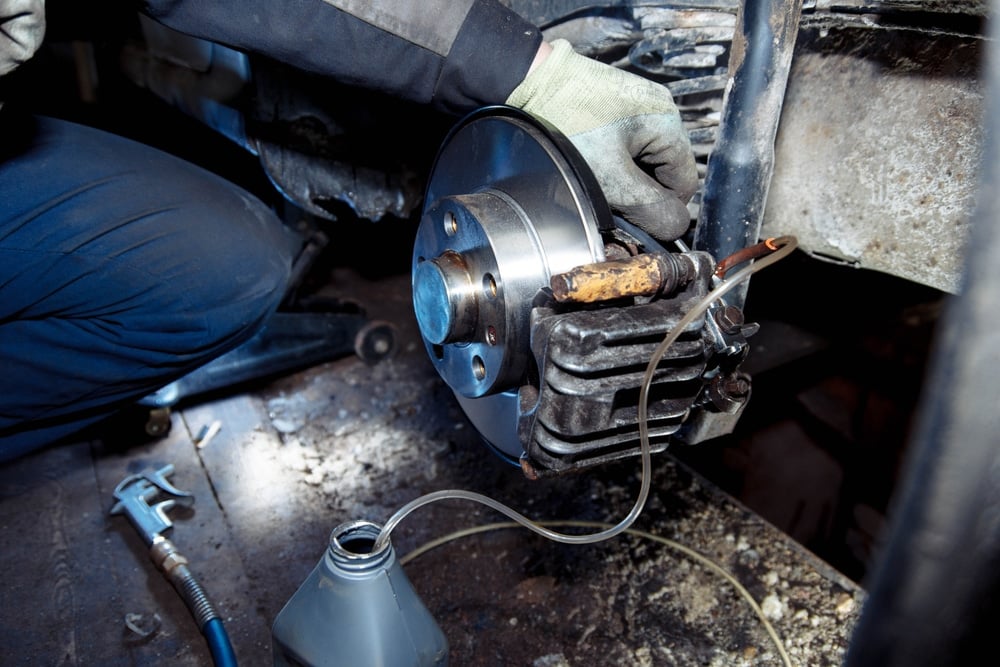
Most novice mechanics are capable of performing a brake fluid flush at home. You don’t need any special tools or advanced expertise. Here are a few tools you may want to have on hand.
- Wheel chocks
- Clean rags
- Turkey baster
- Floor jack
- Jack stands
Once you have your gear, you are ready to flush the fluid. Follow the procedure in your factory service manual or try these steps.
- Park on a flat surface.
- Put chocks behind the wheels, so it doesn’t roll.
- Open the hood and locate the master cylinder. This part is filled with brake fluid.
- Take off the cap and put a clean rag around the outside to avoid any mess.
- With a turkey baster, you can get the old fluid out of the reservoir. Most of the time, this practice drains about 80% of the fluid.
- Fill up the reservoir with clean fluid. Make sure you have the right brake fluid type for your vehicle.
- Determine the proper order to bleed the calipers. If the brake cylinder is near the driver’s seat, you will start at the rear passenger seat side, move to the rear driver side brake and continue around the vehicle. The sequence always begins with the farthest wheel from the reservoir and moves in order around the car.
- Jack up the side of the car that requires bleeding first. Secure it on jack stands.
- Remove the wheel and bleed the caliper.
- Repeat the steps with each brake. Keep a close eye on the fluid, as it should never go below the minimum line.
- Once you are finished, double-check the capacity of the brake fluid reservoir and refill it if necessary.
Once you’ve finished flushing the brake system, you want to take the car for a test drive. If the brakes don’t feel right, you may need to bleed them again to get any air out of the lines.
Is Brake Fluid Flushing Really Necessary?
Most drivers don’t think about the brake system until something is wrong. In fact, if you wait to get the brake serviced, an accident could occur. It’s estimated that nearly 300,000 accidents a year are attributed to brake failure. You don’t want to become one of these statistics.
Most commonly, drivers remember to get the brake pads and rotors serviced, but the brake fluid goes neglected. Over time, moisture gets into the system, leading to rust and contamination of the fluid. That’s why you don’t want to ignore this important maintenance procedure.
When the fluid is old and contaminated, it can no longer provide the lubrication and protection it needs. You end up with the decreased ability to stop on time, putting you and others at risk. Just as you would change the oil regularly, the brake fluid flush is equally important.
If you don’t want to perform the brake fluid flush yourself, there are plenty of auto repair shops to help you out. Get set up on a regular maintenance schedule, not just for the brakes but all of the vital components of your car. A little prevention can keep your car running even longer.
Can Brake Fluid and Power Steering Fluid Be Used Interchangeably?
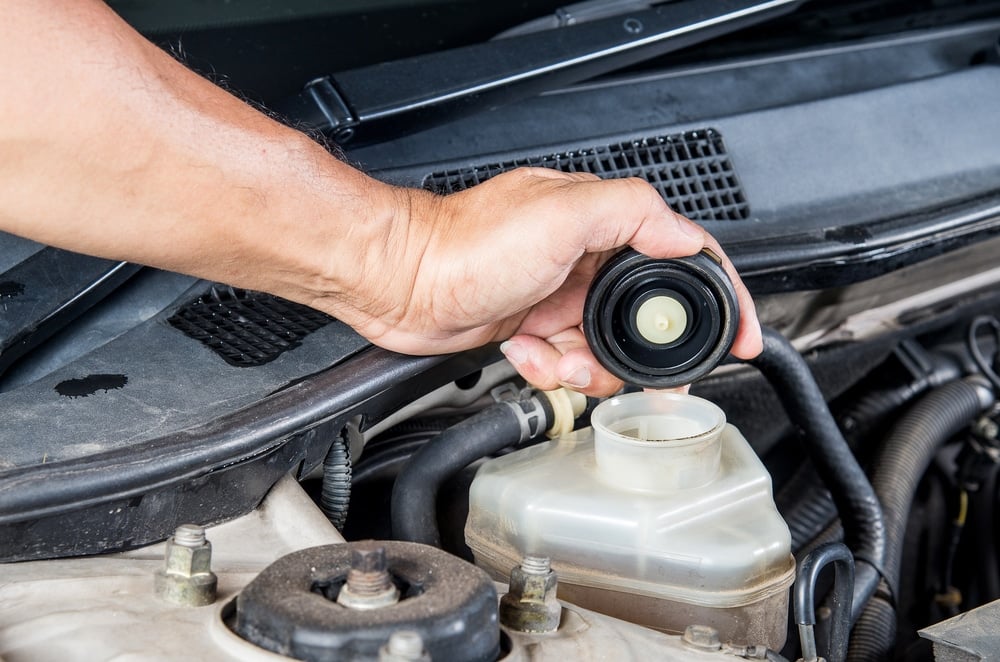
Hydraulic brake fluid is very different from power steering fluid. Neither of these should be put into the other system. Putting power steering fluid into the brake fluid reservoir or vice versa is sure to cause serious damage to the vehicle.
If you’ve accidentally placed one or the other in the wrong system, you need to drain it immediately. Only once it is empty can you fill it back up and run your vehicle again.
READ MORE: Can You Use Brake Fluid As Power Steering Fluid?
How many ounces of brake fluid do I need to bleed the brakes?
Most automotive brake systems hold up to 32 ounces of fluid. You may not need all of this fluid to bleed the brakes, but it’s helpful to have it on hand. Just remember to purchase the right type of brake fluid for your vehicle.
How many bottles of brake fluid do I need to bleed the brakes?
It depends. You can purchase brake fluid in a variety of sizes. There are some that come in 12-ounce bottles for small jobs and others that are sold by the gallon for shops and mechanics. On average, the system holds 32 ounces of fluid, but you don’t always need this much to bleed the brakes.
How many liters of brake fluid do I need to flush the brakes?
Most brake fluid reservoirs hold up to 32 ounces. When converted to liters, that amount equals less than one liter. It’s wise to have this much on hand before attempting to perform a fluid flush. You can have this amount in multiple smaller bottles or one larger.
Can you just change the brake fluid without bleeding?
It’s okay to add some fresh fluid without bleeding the brakes. However, whenever you flush the system or if the air is introduced to it, you should bleed the brakes to be safe. If air infiltrates the brake system, you could lose vital stopping power, which could cause an accident.
The brake fluid flush is a common maintenance procedure recommended by the automaker. As experienced mechanics, many of us can perform this procedure in our sleep. With that said, the at-home mechanic should also be able to get it done with the right equipment and a little bit of time.
Whether you can do it yourself or you need to schedule an appointment with an auto repair shop, it’s imperative that you have the flush performed. It’s necessary to protect the brake system and imperative if you want to avoid accidents. Don’t put off any recommended maintenance if you want your car to run its best.
Learn more:
- DOT 3 vs. DOT 4 Brake Fluid Differences (Can You Mix Them?)
- Brake Fluid Flush – Why You Need It & What It Costs
- Spongy or Soft Brake Pedal: Causes & How To Fix It
Categories: Brakes, Maintenance
